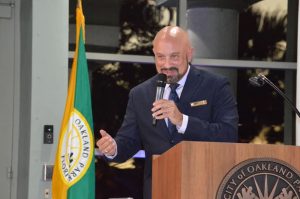A Paradise Called Florida

Alligators, airboats, beaches, boats, canals, cattle, cocaine, cowboys, discos, Disney, drugs, drag queens, ecstasy, fashion, Ferraris, fitness, food, football, Gators, hanging chads, Hard Rock, hot, humid, intracoastal, jets, kayaking, Latinos, luxury cars, Maseratis, Merengue, nightclubs, oranges, paradise, quinces, raves, real estate, rivers, rodeos, Salsa, Scuba Diving, Seminoles, shopping, South Beach, tattoos, tourism, Universal Studios, universities, vices, Virgin, Vizcaya, waterways, yachts, yoga, zoos are just some of the words that can be used to describe the state of Florida today. But while Florida is one of the largest, richest and most amazing states in the United States today, it hasn’t always been that way.
From the Spanish to the British to the Spanish
Florida’s history is long and sordid. Long before being one of the crown jewels of the continental American Empire, it was a savage wilderness in more ways than one.
First colonized by Native Americans, the Spanish, set their sights on Florida in the early 16th century. Truth be told, Ponce de Leon, the famed conquistador came to Florida begrudgingly. He received Florida as a consolation prize after he lost governorship of Puerto Rico. He mounted an expedition, at his own expense, and in 1513 laid claim to Florida for Spain.
The Spanish held Florida for over 250 years until the British took it over from 1763-1783. The British used Florida as a base of operations for their military campaigns during the Revolutionary War. When the Revolutionary War ended, they returned Florida to the Spanish.
Fun Fact: Florida was a Spanish possession for a total of 308 years before it became part of the United States of America.
Florida Comes to America
For the newly formed United States of America, Florida was the proverbial thorn in the new nation’s side. Secretary of State John Quincy Adams described Florida as “…a derelict open to the occupancy of every enemy, civilized or savage, of the United States, and serving no other earthly purpose than as a post of annoyance to them” (Clark, 34).

A haven for pirates, criminals, runaway slaves, fleeing Indians, defeated British Loyalists, adventurers and fortune seekers, Florida was a wilderness that vis-a-vis the nascent United States had to be tamed. But Florida still belonged to the Spanish and taming it was Spain’s problem.
Spain, no longer the powerful nation it had been in previous centuries, was unable to control Florida. This lack of control forced the United States to intervene in the name of preserving American interests and stopping the illegal importation of African slaves.
The Americans and Spanish clashed on several occasions and the tension soon escalated to a breaking point. Finally, in 1819, the two countries sat down to negotiate the terms of the cession of Florida to the United States.
The Florida Purchase
An American Senator opposed to the purchase saying that Florida was “…a land of swamps, of quagmires, or frogs and alligators… no one would want to immigrate there, even from Hell” (Clark, 44). But whether it was desirable or not, was not the point. From a perspective of national security, controlling Florida was a necessity and Secretary of State Adams knew that.
In 1819 Adams sat down with the Spanish representative Luis de Onís and hammered out a treaty known as the Adams-Onís Treaty. The Treaty ceded Florida to the United States for $5 million dollars.

The Spanish never saw a penny. Instead the United States agreed to pay out $5 million dollars in claims which Americans had against the Spanish empire.
Bargain of the Century?

If we look at the Florida Purchase in today’s terms, $5 million dollars is a bargain!
However, if we look at it through a historical lens, it would appear the U.S. government overpaid for Florida. Let’s compare it to the Louisiana and Alaska Purchase in order to put this idea into perspective.
In 1803 Jefferson bought the Louisiana Territory, 827,000 square miles, from France for $15 million dollars. Jefferson paid $18.13 per square foot.
In 1867, 48 years after the Florida Purchase, the United States bought Alaska from Russia. The U.S. paid $7.2 million dollars for 600,000 square miles. Critics of the purchase saw it as exorbitant and called it “Seward’s Folly” after Secretary of State William Seward. Seward paid $12 per square foot.
Florida was approximately the same size as it is today when the United States purchased it, approximately 66,000 square miles. At $5 million dollars, the United States paid a whopping $75 per square foot for the Sunshine State.
Compared to what it paid for Florida, the United States paid 4.2 times more than it did for Louisiana and 6.2 times than it did for Alaska. Certainly not the Bargain of the Century!
Bibliography
Clark, James C. Hidden History of Florida. Charleston, SC, The History Press, 2015.



















